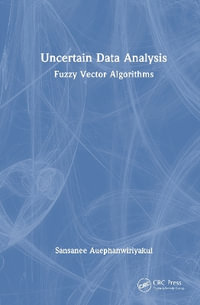
Neural Networks for Applied Sciences and Engineering
From Fundamentals to Complex Pattern Recognition
Hardcover | 12 September 2006 | Edition Number 1
At a Glance
Hardcover
RRP $284.00
$246.75
13%OFF
Available for Backorder. We will order this from our supplier however there isn't a current ETA.
ISBN: 9780849333750
ISBN-10: 084933375X
Published: 12th September 2006
Format: Hardcover
Language: English
Number of Pages: 594
Audience: Professional and Scholarly
Publisher: Taylor & Francis Ltd
Country of Publication: GB
Edition Number: 1
Dimensions (cm): 24.2 x 16.3 x 3.9
Weight (kg): 1.0
Shipping
| Standard Shipping | Express Shipping | |
|---|---|---|
| Metro postcodes: | $9.99 | $14.95 |
| Regional postcodes: | $9.99 | $14.95 |
| Rural postcodes: | $9.99 | $14.95 |
Orders over $79.00 qualify for free shipping.
How to return your order
At Booktopia, we offer hassle-free returns in accordance with our returns policy. If you wish to return an item, please get in touch with Booktopia Customer Care.
Additional postage charges may be applicable.
Defective items
If there is a problem with any of the items received for your order then the Booktopia Customer Care team is ready to assist you.
For more info please visit our Help Centre.
You Can Find This Book In
This product is categorised by
- Non-FictionComputing & I.T.Computer ScienceArtificial IntelligenceNeural Networks & Fuzzy Systems
- Non-FictionComputing & I.T.Computer ScienceArtificial IntelligencePattern Recognition
- Non-FictionComputing & I.T.Computer ScienceSystems Analysis & Design
- Non-FictionScienceBiology, Life Sciences
- Non-FictionEngineering & TechnologyEnergy Technology & EngineeringElectrical Engineering
- Non-FictionEngineering & TechnologyElectronics & Communications EngineeringElectronics EngineeringAutomatic Control Engineering
- Booktopia Publisher ServicesTaylor & Francis
























